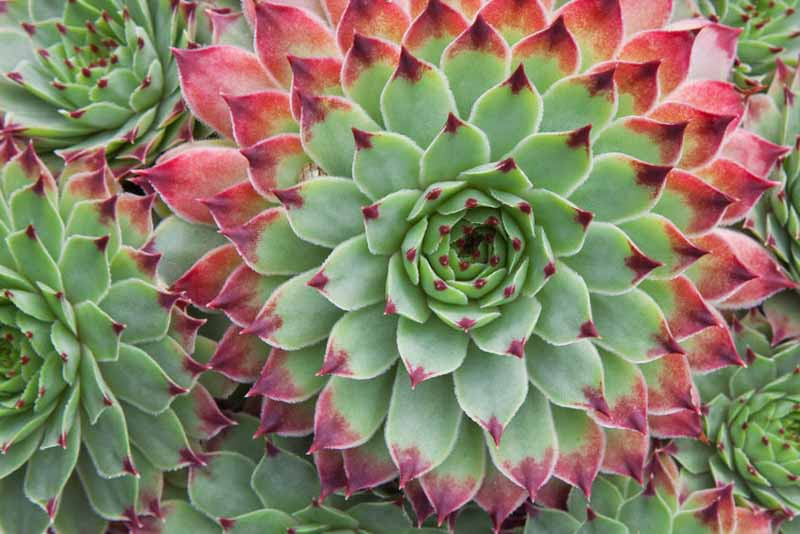Sempervivum
Sempervivum, commonly known as Houseleeks or Hens and Chicks, is a genus of about 40 species of succulent plants native to the mountains of Europe and North Africa. The name “Sempervivum” means “always alive” in Latin, referring to the plant’s hardiness and ability to thrive in harsh conditions.
Size: Sempervivum exhibits a mat-forming growth habit, creating low, ground-hugging rosettes of fleshy leaves. The rosettes are usually 1-4 inches (2-10 cm) in diameter, with the entire plant spreading up to 12 inches (30 cm) or more as new rosettes form.
Flowers: The flowers are star-shaped and borne on tall, upright stalks that rise above the foliage. They come in shades of pink, red, or yellow and typically bloom in the summer. However, it’s worth noting that Sempervivum is monocarpic, meaning each rosette dies after flowering, but is usually replaced by new rosettes.
Hardiness: Sempervivum is incredibly hardy, suitable for USDA zones 3-8. It can withstand freezing temperatures, high heat, and drought.
Uses: The uses are numerous. Its low-growing habit and ability to tolerate poor soil make it perfect for rock gardens, green roofs, container gardening, or as ground cover in dry, sunny areas. The plants are also very drought-tolerant, making them ideal for xeriscaping or areas with water restrictions.
Pollinators: The flowers attract a variety of pollinators, including bees and butterflies.
Deer and rabbits: Sempervivum is also usually resistant to deer and rabbits due to its thick, fleshy leaves.
One key fact about Sempervivum is their ease of propagation. New rosettes, or “chicks,” form around the mother plant, or “hen,” and can be easily separated and replanted to create new plants. This, coupled with their hardiness and low maintenance, makes Sempervivum a popular choice for beginner and experienced gardeners.

